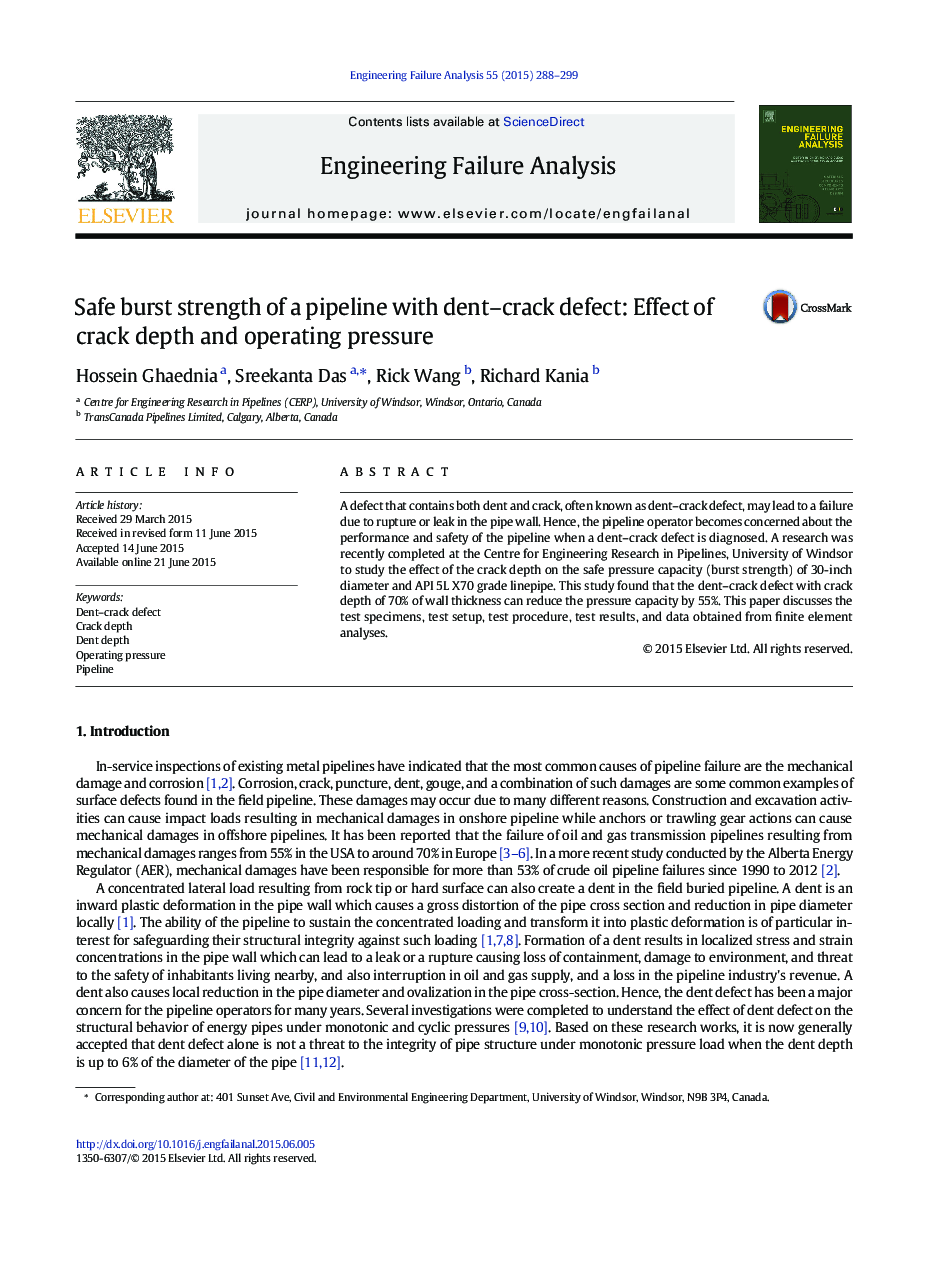| Article ID | Journal | Published Year | Pages | File Type |
|---|---|---|---|---|
| 763351 | Engineering Failure Analysis | 2015 | 12 Pages |
•Four full scale pipe specimens with dent-crack defect has been tested.•FEA model developed and J1c used to predict the burst strength of this linepipe.•Pipe with crack depth less than 0.35 of thickness is able to sustain MAOP.•Critical crack depth of 12.5% defined by ASME B31.4 is too conservative.•Burst strength in this linepipe with dent-crack defect can reduce by as much as 55%.
A defect that contains both dent and crack, often known as dent–crack defect, may lead to a failure due to rupture or leak in the pipe wall. Hence, the pipeline operator becomes concerned about the performance and safety of the pipeline when a dent–crack defect is diagnosed. A research was recently completed at the Centre for Engineering Research in Pipelines, University of Windsor to study the effect of the crack depth on the safe pressure capacity (burst strength) of 30-inch diameter and API 5L X70 grade linepipe. This study found that the dent–crack defect with crack depth of 70% of wall thickness can reduce the pressure capacity by 55%. This paper discusses the test specimens, test setup, test procedure, test results, and data obtained from finite element analyses.
